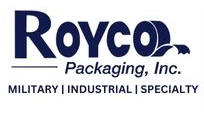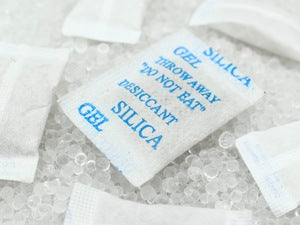Desiccant bags are indispensable tools used to protect products from moisture damage during storage and transportation. These small pouches contain a moisture-absorbing substance, typically silica gel or clay, which helps maintain a dry environment. However, like any other product, desiccant bags have a limited lifespan. In this post, we will explore the factors that influence the longevity of desiccant bags and provide insights into their typical lifespan.
Desiccant Bag Composition and Types
Desiccant bags come in various compositions, but two of the most common types are silica gel and clay desiccants. Silica gel, a highly porous form of silicon dioxide, is known for its excellent moisture absorption properties. Clay desiccants, on the other hand, are made from natural materials like montmorillonite clay and provide reliable moisture control.
Factors Affecting the Lifespan of Desiccant Bags
Several factors can influence the lifespan of desiccant bags:
- Humidity Levels: The ambient humidity levels play a crucial role in determining how long a desiccant bag will last. Higher humidity levels will result in quicker saturation of the desiccant material, reducing its effectiveness over time.
- Bag Size and Composition: The size and composition of desiccant bags also impact their lifespan. Larger bags tend to last longer as they have a higher moisture absorption capacity. Additionally, the type and quality of desiccant material used in the bags can influence their longevity.
- Storage Conditions: Proper storage conditions are essential for maintaining the effectiveness of desiccant bags. Bags should be stored in a dry environment and kept away from direct sunlight or extreme temperatures, as these factors can degrade the desiccant material prematurely.
- Packaging Design: The packaging design of desiccant bags can affect their lifespan. Bags with good sealing properties can prevent moisture from entering the package, thereby extending the lifespan of the desiccant material.
Typical Lifespan of Desiccant Bags
The lifespan of desiccant bags can vary depending on the aforementioned factors. Generally, desiccant bags have an estimated lifespan ranging from a few months to a couple of years.
For silica gel desiccant bags, their lifespan can be determined using an indicator that changes color when the desiccant material becomes saturated. Once the indicator changes color, it signifies that the desiccant bag needs to be replaced or recharged.
Clay desiccant bags usually have a longer lifespan compared to silica gel bags. They can maintain their moisture absorption capacity for an extended period, especially in low-humidity environments.
Monitoring and Maintenance
To ensure the effectiveness of desiccant bags, regular monitoring and maintenance are essential. Here are some key practices to follow:
- Regular Inspection: Periodically check the desiccant bags to ensure they are not damaged or expired. Look for any signs of leakage or physical deterioration that may compromise their performance.
- Recharging or Replacing: When the desiccant bags reach their saturation point or the color indicator changes, it's time to recharge or replace them. Silica gel desiccant bags can be recharged by heating them to remove the absorbed moisture. Clay desiccant bags, however, usually require replacement once they reach their moisture absorption capacity.
- Proper Storage: Store unused desiccant bags in airtight containers or bags to maintain their effectiveness. This prevents them from absorbing moisture from the environment before use.
Extending the Lifespan of Desiccant Bags
To prolong the lifespan of desiccant bags and enhance their moisture-absorbing capabilities, several strategies can be employed:
- Proper Packaging: When storing products, ensure that they are properly packaged to minimize exposure to moisture. Using moisture barrier bags or sealed containers can significantly reduce the workload on desiccant bags and extend their lifespan.
- Humidity Control: Implementing measures to control the ambient humidity levels in storage areas can help alleviate the burden on desiccant bags. Using dehumidifiers or maintaining a controlled environment can prevent excessive moisture absorption, thereby increasing the longevity of the desiccant bags.
- Desiccant Bag Placement: Proper placement of desiccant bags within the packaging is crucial for maximizing their efficiency. Positioning them close to areas prone to moisture buildup, such as corners or crevices, can help target the problem areas and enhance moisture absorption.
Reusing Desiccant Bags: Recharging and Regeneration Methods
Instead of discarding desiccant bags once they reach their saturation point, some types of desiccants can be recharged or regenerated for reuse. This offers a cost-effective and environmentally friendly solution. Here are some common methods:
- Silica Gel Regeneration: Silica gel desiccant bags can be regenerated by heating them to remove the absorbed moisture. Place the saturated bags on a baking sheet and heat them in an oven at a low temperature (around 120°C or 250°F) for a few hours until they regain their original color and moisture absorption capacity.
- Clay Desiccant Rejuvenation: Clay desiccants, although not as commonly regenerated as silica gel, can be rejuvenated to some extent. Place the saturated clay desiccant bags in a well-ventilated area or under direct sunlight to allow them to dry out. However, keep in mind that the effectiveness of regenerated clay desiccants may vary compared to fresh ones.

